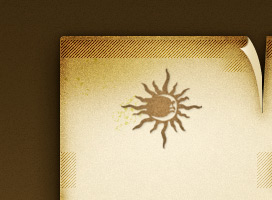| |
What is pyrography ?

Pyrography is the art of burning drawings or
figures into wood, using a tool with a heated metal
point or needle. When this needle comes in contact
with wood it burns the wood, creating brown or black
spots and lines with which drawings or figures can be
designed
Today, the heating of the needle is done electrically.
However, history books describe how, prior to the
invention of electricity, pyrography tool already
existed and worked with the help of benzene.
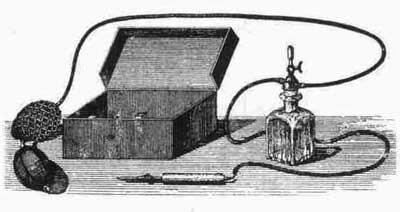
This is a picture of a pyrography tool based on benzene:
the graphics-needles were made out of platinum and
were screwed into the needle holder, which was
connected through a rubber tube to a bottle of
benzene. The tube continued on to a gumball, which
could be squeezed by hand or foot to push benzene
fumes from the bottle to the gumball. The
graphics-needle was started with a flame, after which
the benzene fumes kept the needle heated. By pumping
the gumball slower or faster, the temperature of the
graphics needle could be increased or decreased.
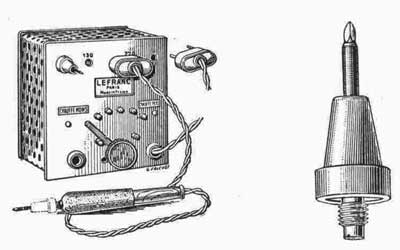
The arrival of electricity brought with it the
opportunity to develop simpler tools. Electrical
resistance was added in the vicinity of the graphics
needle which allowed the temperature to be changed
through a switch that increased or decreased the
electrical resistance and thus increasing and decreasing
the flow of electricity and the temperature.
Besides the fact that it was easy to use, the electric
tool also allowed the artist to have both hands free to
work on his pyrography artwork. And� there was no need
for expensive platinum needles!
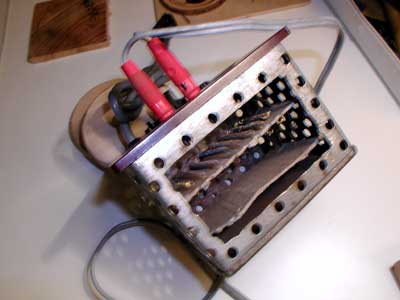
This type of electric tool, as pictured above, is still
in use today. The big disadvantage of these types of
tools is that the electrical resistance of 130 or 220 V
runs directly through to the pyrography needle, which
can be a safety hazard. In modern tools, this was
amended so that only low and thus safe currents can
reach the pyrography needle. Also, the isolation around
the needle was significantly improved.
There are several different sorts of pyrography needles
to transfer the heat to the wood and thus create the
drawing or figure.
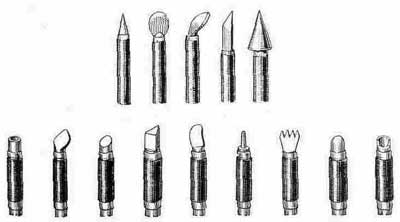
Depending on the result you are looking for, you can
use circular or triangular needles. In order to obtain
shadow effects in pyrography, a needle with diagonal
sides is used.
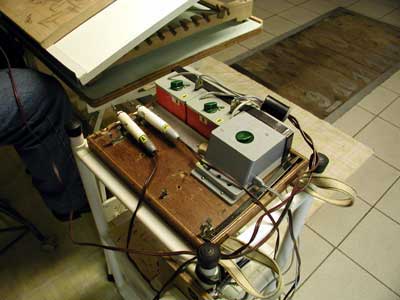
All sorts of wood can be worked on with
pyrography, but the best results are achieved when
using soft white wood, such as lindens wood.
Before you can start practicing the art of pyrography,
you need to transfer a drawing onto the piece of wood.
This can be done either directly or through tracing a
model using carbon paper. Through the knowledgeable
use of different types of pyrography needles, you can
create different colors ranging from light brown to
black by applying fine lines or grooves and shadows
over large surfaces.
Click on the picture to see more details
The quality of the pyrography tool and the needles are
important, but the hand of the artist who holds the
needle is what determines the quality of the art work.
The examples shown elsewhere on this site provide an
overview of the results that can be achieved through
pyrography.
|
|

|
|
